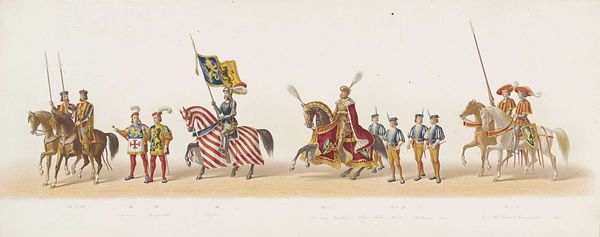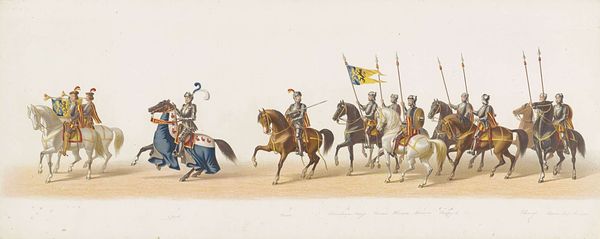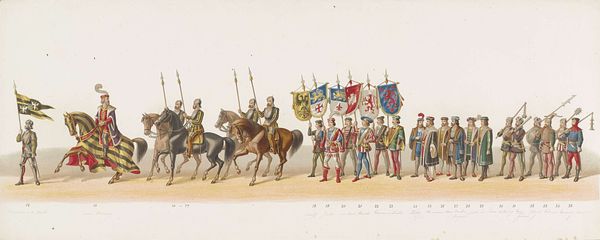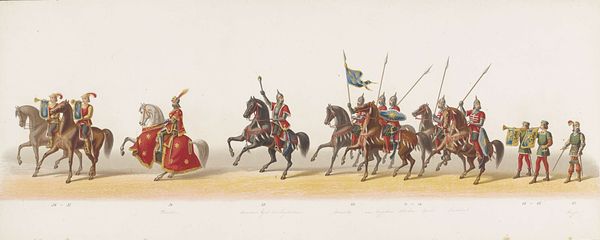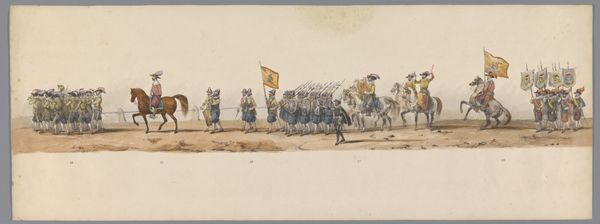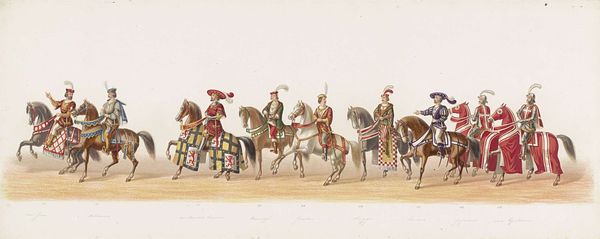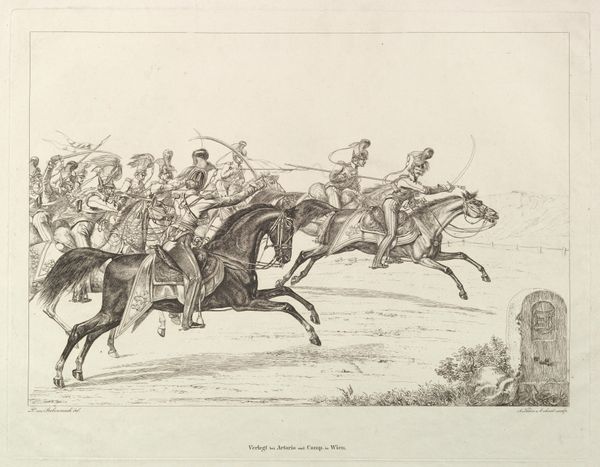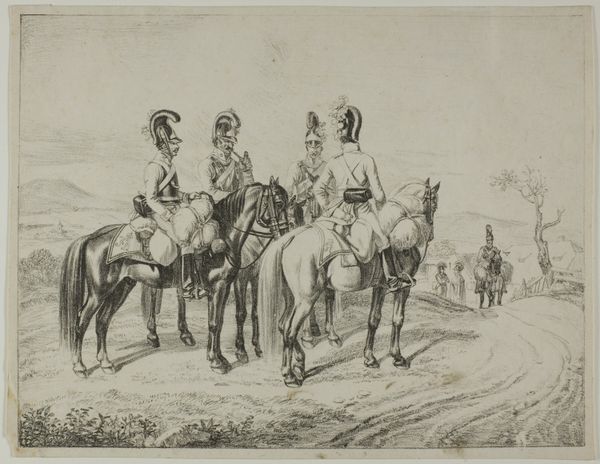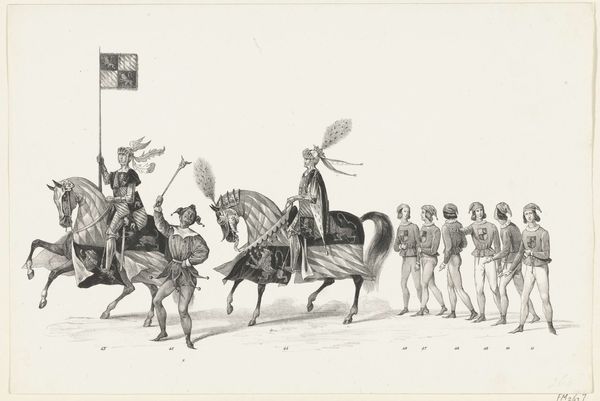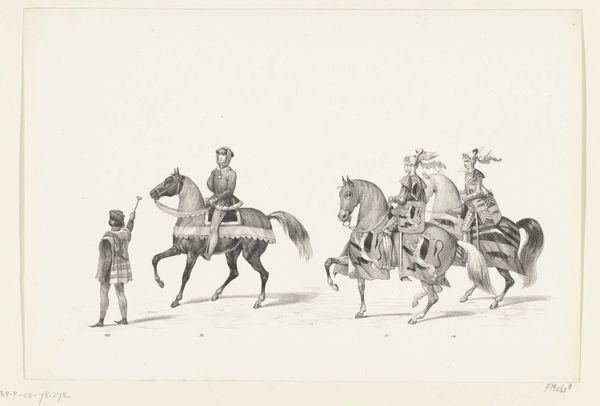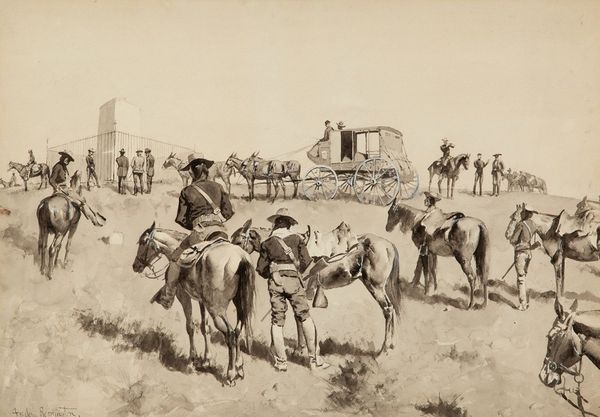
print, engraving
# print
#
coloured pencil
#
genre-painting
#
history-painting
#
engraving
Dimensions: height 290 mm, width 725 mm
Copyright: Rijks Museum: Open Domain
Editor: Here we have an engraving entitled "Delftse optocht van 1873 (negende plaat)," which translates to "Delft Procession of 1873 (ninth plate)," created by an anonymous artist. It looks like a historical parade, maybe a reenactment? What jumps out at you? Curator: It’s fascinating how historical pageantry functions. This engraving captures not just an event, but the performative aspect of history itself. Consider when this was made, 1873 – what historical narratives was the Netherlands keen on promoting at that moment? Was this display of historical power tied to contemporary politics or colonial ambitions? Editor: That's an interesting point! I hadn't considered it as a deliberate political statement. The figures look almost like they are playing dress-up, though the expressions are all quite serious. I mean, who were they trying to impress, and why? Curator: Precisely! Think about the relationship between performance and identity. By visually aligning themselves with historical figures, they're constructing a narrative of legitimacy. The clothing and symbols carry powerful social and political weight. This isn't just a quaint historical display. Whose history is amplified? Whose is erased, and why? Consider the social and cultural power structures implicit in who gets to represent history and whose voices get to be heard. Editor: So it is an assertion of power? This print now feels very different than it did at first glance! It is more complex, with historical and political intentions… Thank you. Curator: Indeed! Art like this offers critical entry points for examining how societies construct and manipulate the past to shape the present. Always consider who is telling the story.
Comments
No comments
Be the first to comment and join the conversation on the ultimate creative platform.
